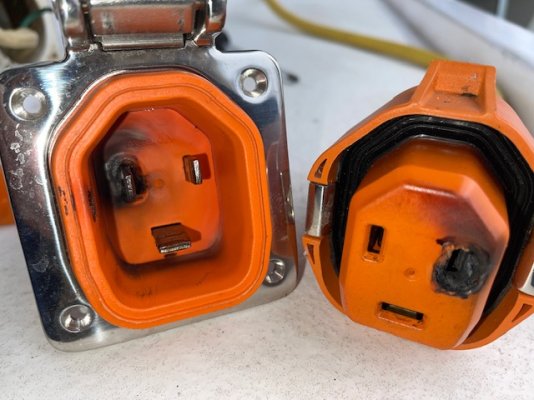BradC
Veteran Member
- Joined
- Nov 7, 2018
- Messages
- 80
- Location
- United States
- Vessel Name
- Dream Chaser
- Vessel Make
- 38' Marine Trader FB Aft Cabin
A year ago I swapped out my shore power cord for the SmartPlug after the cord and plug from the previous owner had a melt down. I wanted to be extra safe.
A year later, the Smart Plug just did what they say it's not supposed to do. Tripped the breaker thankfully and no fire. Damage is limited to the Smart plug. The rear wiring on the boat side is unscathed. The shore power cord beyond the SmartPlug is also fine. Damage limited to the SmartPlug connection itself.
Boat is in a covered slip and cord is not exposed to any tension. Not sure what caused the short and subsequent burnup. i reached out the company and they have yet to respond so I thought I'd post it here as a potential warning to those who may feel they are safe from such things when using this plug.
[/ATTACH]
A year later, the Smart Plug just did what they say it's not supposed to do. Tripped the breaker thankfully and no fire. Damage is limited to the Smart plug. The rear wiring on the boat side is unscathed. The shore power cord beyond the SmartPlug is also fine. Damage limited to the SmartPlug connection itself.
Boat is in a covered slip and cord is not exposed to any tension. Not sure what caused the short and subsequent burnup. i reached out the company and they have yet to respond so I thought I'd post it here as a potential warning to those who may feel they are safe from such things when using this plug.
[/ATTACH]


